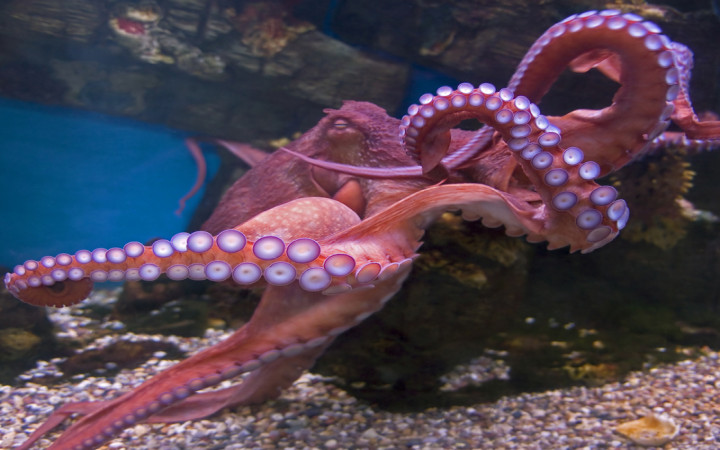Today’s Wonder of the Day was inspired by Emma. Emma Wonders, “how do squids ink” Thanks for WONDERing with us, Emma!
Did you know that squids, cuttlefish, and octopuses are related? They are! They belong to a group of marine animals known as cephalopods (sEf-uh-luh-pahds). Some squids can grow to around 60 feet long. That’s about as long as a bowling alley or a semi-truck! One thing they all have in common is their tentacles. Another is the skill some use to change their skin color and texture. Lastly, they also use a unique way to protect themselves: inking. No, they don’t take out a pen and write letters. Their bodies can produce and spray out ink for defense and to escape danger.
How are these incredible creatures able to pull off this amazing trick? From hatching, squids have an ink sac. This means that they can produce and use their ink from the earliest age. At the base of the ink sac is an ink gland, where the ink is made. Additionally, there is a funnel organ that creates mucus. Not a lot is known about the funnel organ. Researchers think it works to combine mucus with the ink. Different combinations of mucus and ink create various outputs. Ink can be cloudy, like a smoke screen. It can also appear like ropes in the water. Depending on the predator and scene, squid can produce ink to look like themselves.
We believe that when a squid feels threatened, its body pulls from its ink gland and funnel organ. The mixture is then expelled from its body in response to the threat. The squid uses its siphon to push out the ink. The siphon is the way a squid moves through the water—like jet propulsion. The ink can allow the squid to escape. Or it can temporarily confuse the predator by blocking its sense of smell and irritating its eyes.
But what is the ink made from? Do cephalopods have ink factories inside their bodies? Well, in a way, they do. There is a gland that creates the ink from various chemicals. Mainly, the ink is made up of melanin. This pigment determines the color of the hair, eyes, and skin in humans. In fact, all mammals have melanin!
Most cephalopod ink is black. But it can range to brown, reddish, or even deep blue. For centuries, squid ink has been used for many purposes. It is popular in the food of several cultures. Writers put it in their pens. Artists can paint with it. Sometimes, it can be found in makeup.
Chinese folk medicine uses squid ink for several treatments. Medical research is looking into how squid ink might be useful for health issues like high blood pressure and cancer.
What other animals do you know that can create their own defense spray? The natural world is full of surprises!
Standards: CCRA.R.2, CCRA.SL.5, CCRA.W.9, D2.HIS.2, NCAS.CR.1




